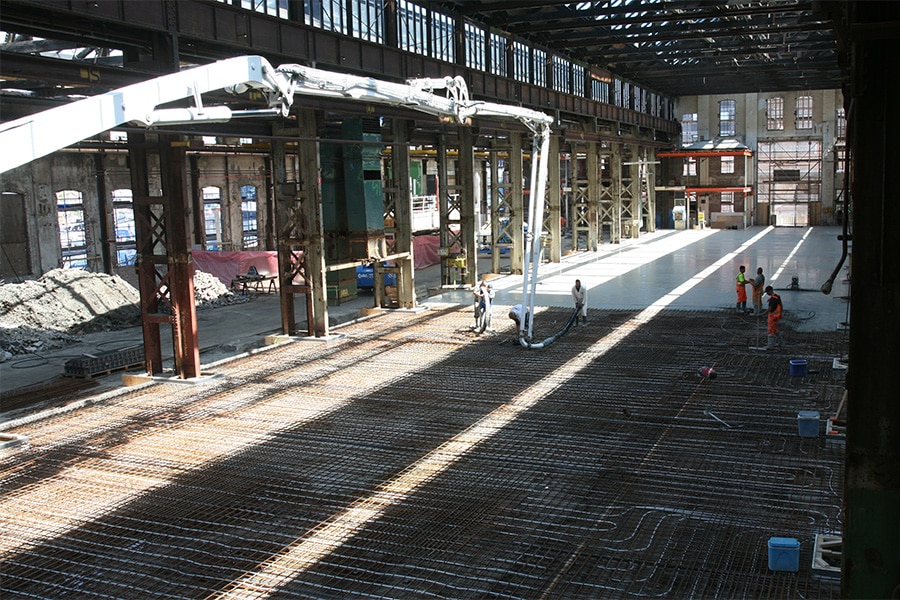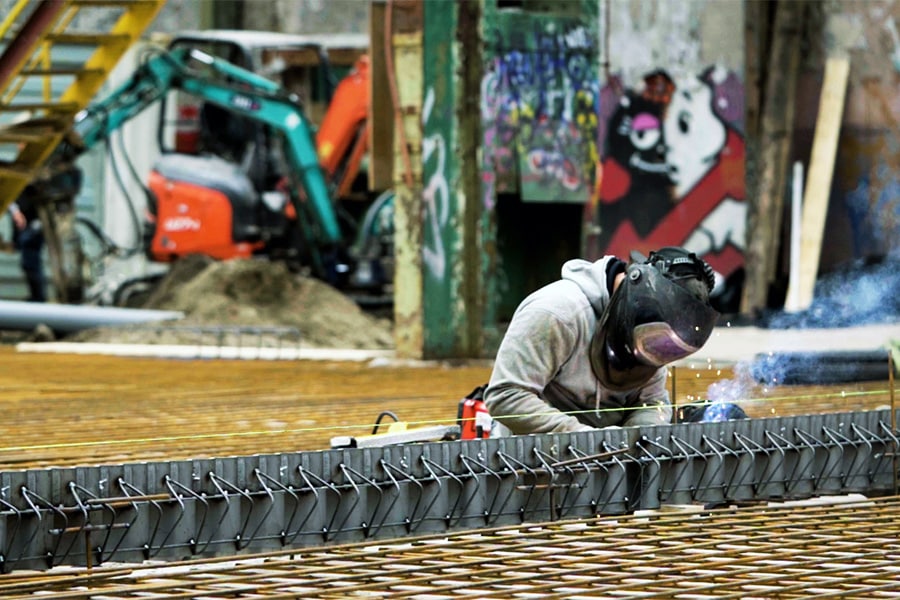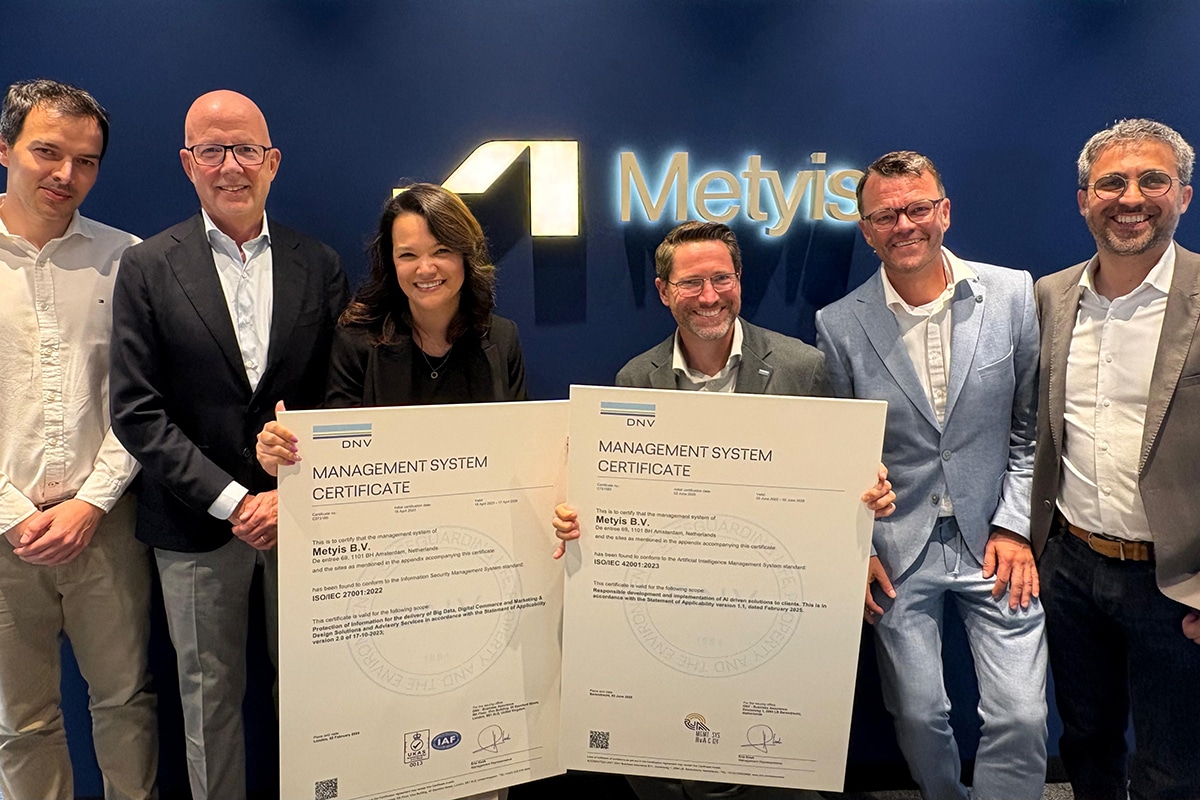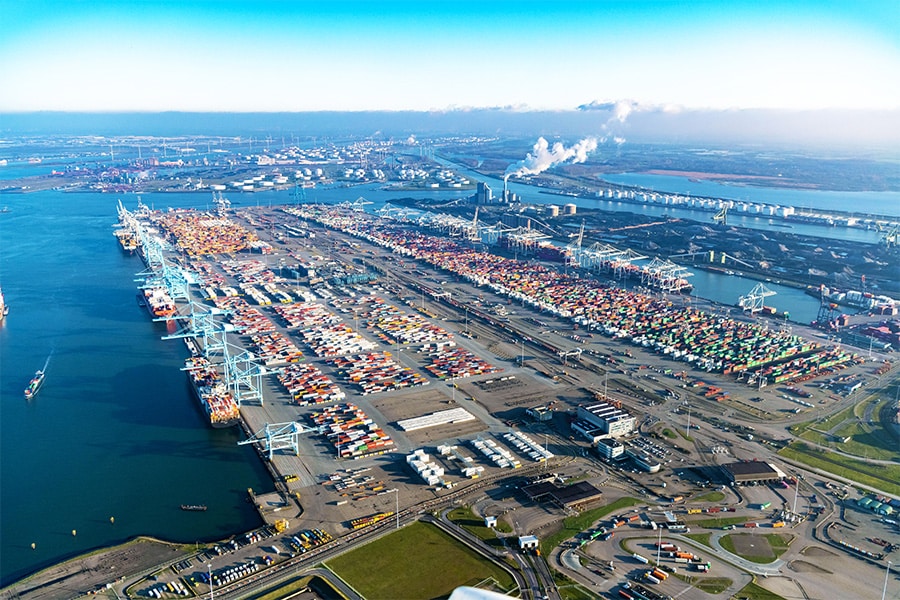
Highest container cranes safe in any weather
Storm anchors and tie-down facilities in the harbor
After a boat trip from Shanghai, three new quay cranes for Hutchison Ports ECT Rotterdam (ECT) arrived at Rotterdam's Maasvlakte on April 9. The cranes, topped 142 meters in height, will soon go to work at the ECT Delta terminal along Amazon Harbour. With a lifting height of 54 meters and a reach of 25 containers, the remotely controlled ZP5 cranes from manufacturer ZPMC can handle the very largest container ships. To also secure the new addition on the quays, especially in higher wind speeds, additional tie-down facilities have been installed in addition to the standard storm locks. After all, tall trees catch a lot of wind.
ECT is investing heavily in the modernization and sustainability of the ECT Delta container terminal. That means the deployment of increasingly zero-emission equipment, shore power facilities, further automation of container handling and more capacity to handle Ultra Large Container Ships. "These huge ships require large cranes, and the three cranes recently delivered to ECT fit into that picture," says Paul Bouten, senior project manager at ECT Rotterdam. "Container cranes are tall and could get an uplift in very high wind forces. There are safety protocols for that. In case of strong wind forces, container transshipment is stopped at some point and quay cranes are driven to their storm positions, where they are secured with storm pins in the quay. The tallest cranes also have an additional 'tie-down' device; a type of tensioning device that tethers the crane to the ground and prevents uplift."
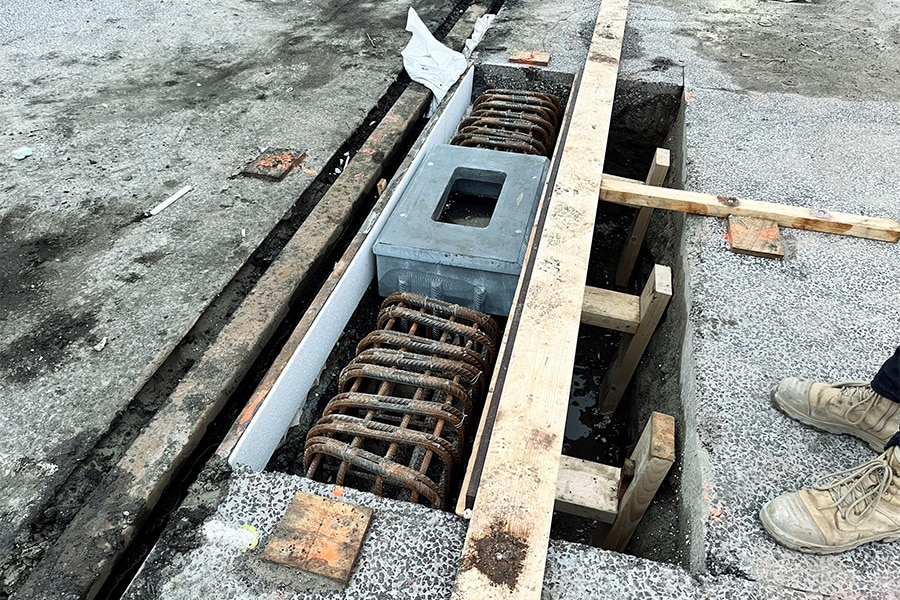
Storm lock
A storm lock is nothing more than a steel box built into the quay structure next to the recessed rails. "If the crane needs to be secured in high winds, the crane is driven to the storm position. The crane operator can then secure the crane by sliding a pin from the crane into a hole next to the crane track. Since the storm pins of the new cranes are stronger and therefore larger, additional new features have been installed next to the rails for each crane and on both the water side and the quayside. These new steel boxes are anchored deep to the quay and the crane tracks with rebar."
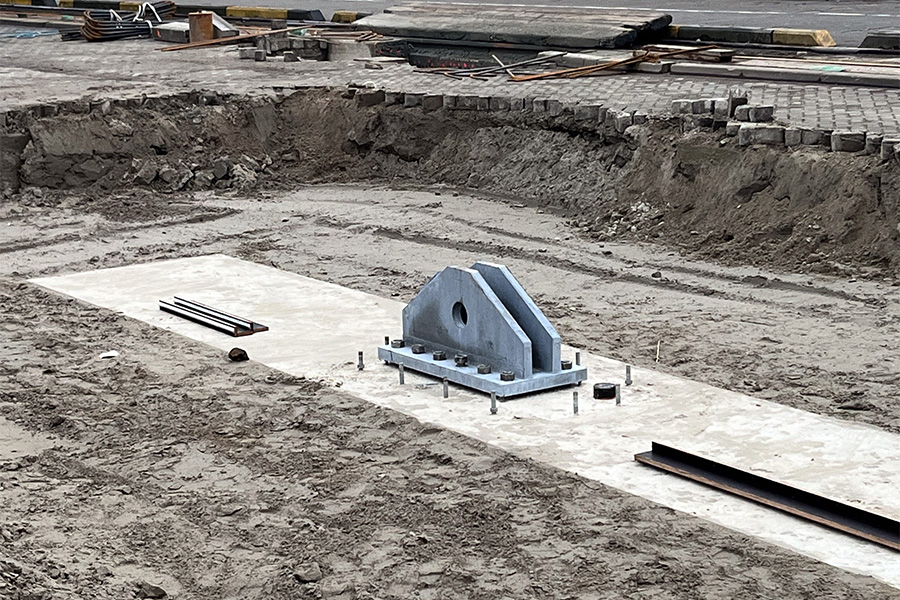
Tie-down provisions
The new ZP5 cranes are of the outer category and thus receive additional anchoring due to their higher wind loads. "Those are the tie-down provisions," Bouten continued. "There are eight parking positions constructed with two storm locks each and a tie-down provision, to which a large crane can be safely anchored." A tie-down facility is an anchor consisting of a steel eye, which is normally sunk into the quay and can be folded up in the event of a storm warning. "In the expectation of a very severe storm, a steel tie-down arm can be lowered to the crane. This can be attached to the eye with a pin and locking pin. The eye assembly is riveted with heavy anchors to an underlying foundation beam measuring 1,500 by 1,700 mm, which is anchored to the ground by CSM panels." In November, the new storm shelters were built by Gebr. De Koning on behalf of the Port of Rotterdam Authority. "Well in time for the arrival of the new cranes," concludes Bouten.
